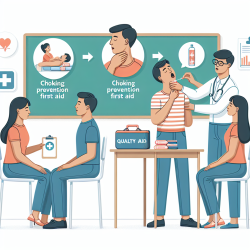As advocates and leaders in the field of special education, we are constantly exploring innovative ways to enhance the learning and development of children with diverse needs. With the advent of technology, telepractice has emerged as a groundbreaking approach, offering new possibilities for supporting our kids. This method not only expands access to specialized services but also aligns with research-driven strategies that cater to the unique needs of each student. As we delve into the world of telepractice, it's essential for parents, educators, and special education advocacy groups to understand its benefits and how it can be a game-changer for our children's education.
Telepractice, or the delivery of therapy services via online platforms, has seen a significant rise, particularly in areas where access to specialized therapists is limited. This approach has opened up new telepractice jobs for professionals and, more importantly, new avenues for children to receive the support they need, regardless of their geographical location. Research indicates that telepractice can be just as effective as traditional face-to-face therapy for many children, offering a flexible and engaging way to meet their educational and therapeutic needs.
For parents and educators curious about how telepractice can fit into a child's education plan, here are some key points to consider:
- Accessibility: Telepractice breaks down geographical barriers, making it easier for kids to access specialized services without the need for long commutes.
- Flexibility: Online therapy sessions can be scheduled around the child's and family's routine, providing a more personalized approach to support.
- Engagement: Many children find the use of technology in therapy sessions engaging, which can lead to improved participation and outcomes.
- Research-Backed: A growing body of research supports the effectiveness of telepractice, with studies showing positive results in areas such as speech therapy, behavioral interventions, and occupational therapy.
Understanding the potential of telepractice is just the beginning. For it to be a successful component of a child's education, collaboration among special education advocacy groups, parents, educators, and therapists is crucial. By working together, we can ensure that telepractice is implemented effectively, addressing the individual needs of each child and providing them with the best possible support.
As we continue to navigate the evolving landscape of special education, let's remain curious and open to research-driven approaches like telepractice. By embracing these innovative solutions, we can make a significant difference in the lives of our kids, helping them to reach their full potential in an increasingly digital world.
If you're feeling inspired to explore how telepractice can benefit your child or students, take the next step. Reach out to special education advocacy groups or online therapy service providers like TinyEYE to learn more about getting started. Together, we can pave the way for a brighter, more accessible future in special education.










